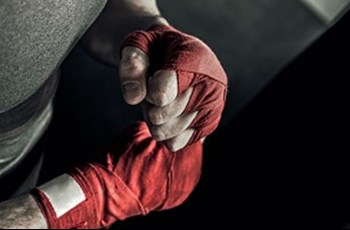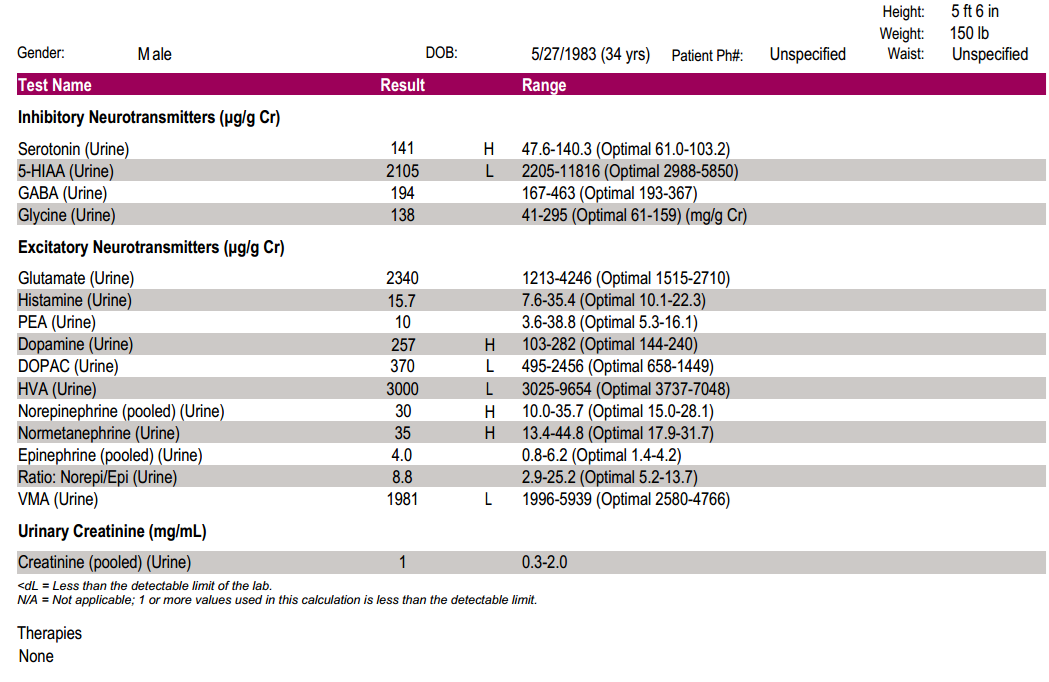
Aggression is deeply rooted in our genetic foundation. Yet it is a double-edged sword: on one side, aggression communicates dominance, an exaggerated hostile manifestation and a willful attempt to harm. On the other, aggression is innate and essential to the human condition, even instrumental to our survival as a species for attainment of resources, determent of competitors, and organization of social hierarchies.
Considerable pressure has been placed on scholars studying cultural paradigms of aggression and how to prevent its excess. In recent years, scientists have begun to shed light on individual variance in genetic factors that have important implications contributing to aggression. These scientific attempts have allowed mapping of the aberrant genotypes onto a larger framework of underlying neurobiology and the resulting personality. And what we have learned is that a genetic mutation in the monoamine oxidase A (MAOA) gene may in part be to blame.
The Warrior Gene
MAOA is an enzyme that breaks down the neurotransmitters serotonin, dopamine, and norepinephrine [1]. The rapid degradation of these neurotransmitters is essential for their proper functioning during synaptic transmission in the central nervous system and in the periphery. Certain types of mutations in the MAOA gene give rise to a sluggish MAOA enzyme, slowing down the metabolism in the above-mentioned neurotransmitters, thereby causing higher levels of serotonin, dopamine, and norepinephrine and lower levels of their respective metabolites. This MAOA variant, characterized by low activity, offers an illustrating example of a minor DNA change that can result in the alteration of certain behaviors.
This slow-acting MAOA mutant serves as the best-validated genetic basis of aggression and is widely known as the "warrior gene." Saddled with the label of "warrior," the name is rather incongruous. "Warrior" conjures a strong, stoic man who can protect and provide for his people. However, "warrior gene" is commonly associated with violent behavior that hides behind an appealing masculine archetype.
Insight from Animal Studies
Regardless of naming nuances, studies in animals show that mice completely lacking MAOA have increased brain levels of serotonin, dopamine, and norepinephrine and increased aggressive behaviors [2]. Restoring MAOA levels to normal in those animals reduced aggressiveness to basal levels.

Why are Males Affected More than Females?
MAOA is an X-linked gene. Therefore, in males, with only a single copy of the X chromosome, the effects of an underactive MAOA enzyme are much more prominent than in females. The general consensus is that the warrior gene predisposes susceptible rage-aholics to excess impulsivity, risky decision-making, violent behavior, and yes, aggression [3]. Some studies mention that gene carriers for the sluggish MAOA may be predisposed to anxiety and neuroticism, while others mention exacerbated antisocial, solitary behavior [1].
Below is an example of what a neurotransmitter report may look like in a patient with a suspected MAOA mutation. This particular patient self-reported symptoms of aggression, anxiety, mania, insomnia and mental fatigue, among others, indicating them as severe. His levels of serotonin, dopamine, norepinephrine and normetanephrine are high, while respective metabolite levels are low, overall resulting from, what appears to be sluggish MAO activity.

It is important to mention here that the opposite effect is seen when MAO is not mutated but levels are high enough that the body burns through all the neurotransmitters, resulting in low neurotransmitter levels and high metabolites levels. When this happens, profoundly unpleasant psychological symptoms can be expected to manifest in the form of depression, anxiety, nervousness, etc.
Extreme Cases
The presence of the gene has also been reported in extremely violent offenders [4]. Moreover, carriers of the warrior gene tend to become profoundly aggressive upon provocation, according to Brown University researchers [5]. Not surprising, as deficient MAOA activity appears to influence predisposition toward hyperreactivity to a threat [6].
A "Perfect Storm"
Sometimes it takes a "perfect storm" of genetic and environmental factors to exert influence on the behavior of an individual. Without structure in upbringing, the effects of the gene can go unchecked. Past research found a pronounced connection among warrior gene carriers between exposure to abuse in childhood and engagement in significantly higher levels of violent behavior as adults [7].
Born to Rage?
In 2010, National Geographic released a documentary called "Inside The Warrior Gene." Men from diverse and sometimes violent backgrounds, self-admitting to impulsive, aggressive behavior, were tested for the warrior gene – bikers, mixed martial arts athletes, ex-gang members. Some questioned the anger inside them, admitting that their anger always simmers just below the surface: "I react violently to violent situations. And I like it." Some of the guys self-identified themselves as "warriors" and expected to carry the mutation. One man, upon receiving the result that he is the warrior gene carrier, said "it makes sense" as he is always "battling a demon." Another with an impulsive, aggressive nature but who does not carry the mutated gene expressed disappointment: "you want to be the warrior, you want to be the man!"
Genes are Not your Destiny
We have the power to overcome our evolutionary impulses. Through our understanding of the MAOA gene, we can come to understand our behaviors better. |
Genes, themselves, don't necessarily dictate behavioral outcomes. Not everyone with the warrior gene is aggressive. Three Buddhist monks, interviewed in the above-mentioned documentary, who were all from violent or difficult backgrounds, all carry the warrior gene. So you see how a predisposition reflects an association and not necessarily a predestination. Violence is not always the outcome if we learn how to channel our genetics.
Frydman and colleagues discuss a different angle of the warrior gene phenomenon. In their study, they saw that those individuals with the warrior gene were seemingly better at making a decision based on risk/reward [8]. So perhaps, although the carriers are viewed as more aggressive or impulsive, they may just be responding to good opportunities.
Regardless of whether this mutation of the MAOA gene results in aggressive behaviors, better decision-making, or both, it clearly has an effect on behavior. However, just having the warrior gene by itself doesn’t make things happen. We have the power to overcome our evolutionary impulses and change outcomes. Through our understanding of the MAOA gene, we can come to understand our behaviors better. And remembering that our genes are only a rather small part of the big picture is imperative as we strive to curb the sweeping and dangerous generalizations that categorize people based on genetic information alone.
Related Resources
- Download: Neurotransmitter Provider Overview
- Download: Neurotransmitter Sample Report
- Blog: Diurnal Fluctuations in Norepinephrine & Epinephrine Levels as Part of the Healthy Stress Response
References
[1] Harro J, Oreland L: The role of MAO in personality and drug use. Prog Neuropsychopharmacol Biol Psychiatry 2016;69:101-111.
[2] Shih JC, Thompson RF: Monoamine oxidase in neuropsychiatry and behavior. Am J Hum Genet 1999;65:593-598.
[3] Godar SC, Fite PJ, McFarlin KM, Bortolato M: The role of monoamine oxidase A in aggression: Current translational developments and future challenges. Prog Neuropsychopharmacol Biol Psychiatry 2016;69:90-100.
[4] Tiihonen J, Rautiainen MR, Ollila HM, Repo-Tiihonen E, Virkkunen M, Palotie A, Pietilainen O, Kristiansson K, Joukamaa M, Lauerma H, Saarela J, Tyni S, Vartiainen H, Paananen J, Goldman D, Paunio T: Genetic background of extreme violent behavior. Mol Psychiatry 2015;20:786-792.
[5] McDermott R, Tingley D, Cowden J, Frazzetto G, Johnson DD: Monoamine oxidase A gene (MAOA) predicts behavioral aggression following provocation. Proc Natl Acad Sci U S A 2009;106:2118-2123.
[6] Morell V: Evidence found for a possible 'aggression gene'. Science 1993;260:1722-1723.
[7] Caspi A, McClay J, Moffitt TE, Mill J, Martin J, Craig IW, Taylor A, Poulton R: Role of genotype in the cycle of violence in maltreated children. Science 2002;297:851-854.
[8] Frydman C, Camerer C, Bossaerts P, Rangel A: MAOA-L carriers are better at making optimal financial decisions under risk. Proc Biol Sci 2011;278:2053-2059.
